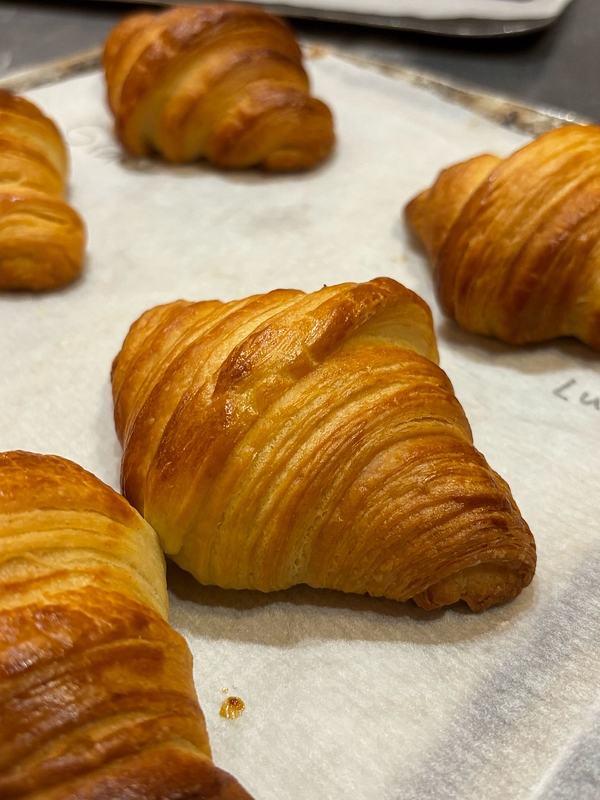What happens?
The butter that you have so lovingly worked on gets so hard that when you roll it out for another fold, it will crack and break apart rather than create a consistent layer of butter. So instead of having a dough-on-butter layering, you will have some dough-on-dough layering, and while that does sound delicious, uneven layering makes for brioche-like croissants—which we want to avoid!
How to spot it
In French, this situation is called marbellage (marbling), and it looks like exactly what you would expect! You will see your dough become bumpy with uneven bumps.
How to prevent it
We asked croissants expert Chef Vi for her help, and she recommends tempering your butter at room temperature for a few minutes before using it. The idea is that you want it cold but still malleable.
Help - My butter was too cold!
First, stop what you're doing! Before completing the next turn, let your pâton rest outside the refrigerator for just a few minutes to allow the butter to soften before rolling it out and continuing.

My butter is squishing out/escaping during the rolling process!
On the opposite end of the spectrum, make sure the pâton has been rested long enough and that the butter is not too warm or it can start to melt out. Also, make sure your work surface is sufficiently floured; if the détrempe sticks too much it can tear and create holes where the butter can leak out. If the dough is too warm, put it in the fridge for a few minutes before continuing. It also helps to work on a cold surface like granite or marble.
What happens if my butter leaks?
This gives us a very similar result to when your butter is too cold! Because of uneven laying, you will find that your dough is denser and not as flakey.

